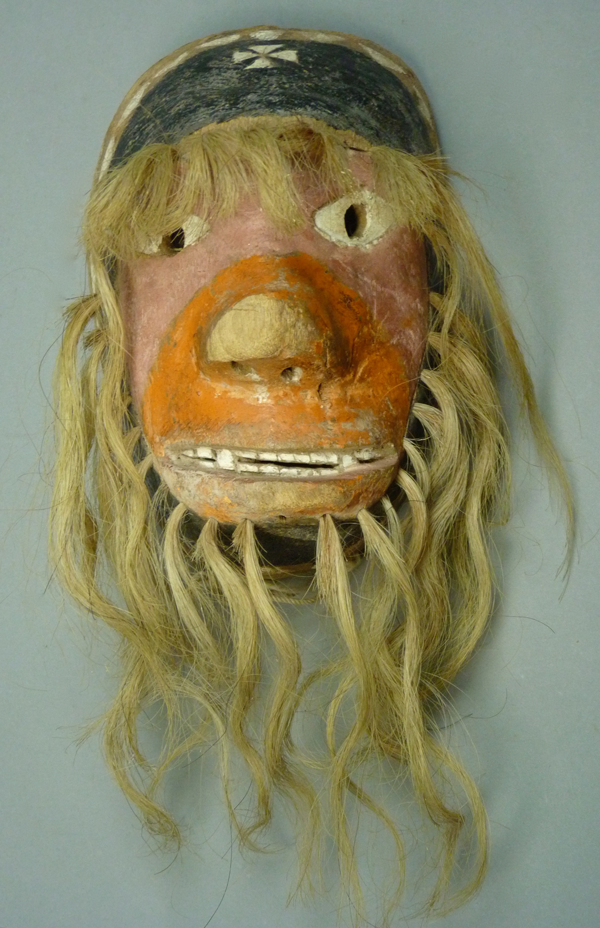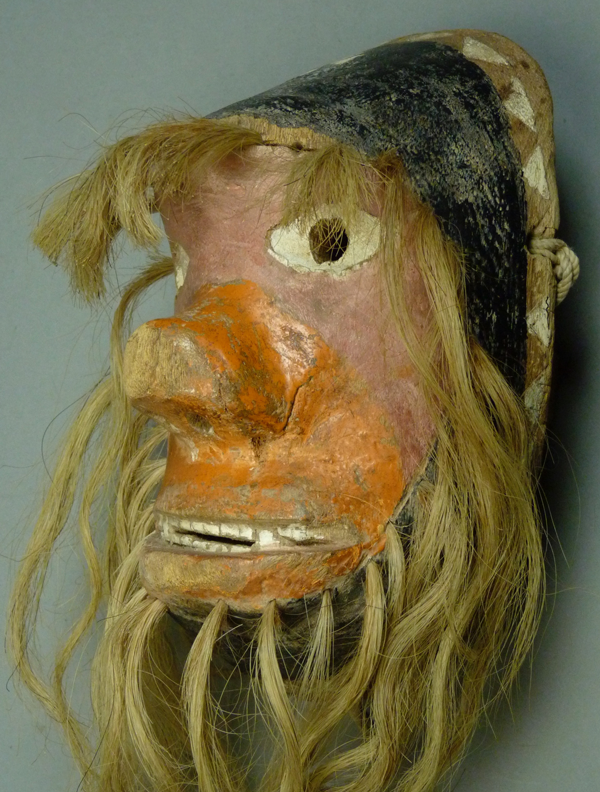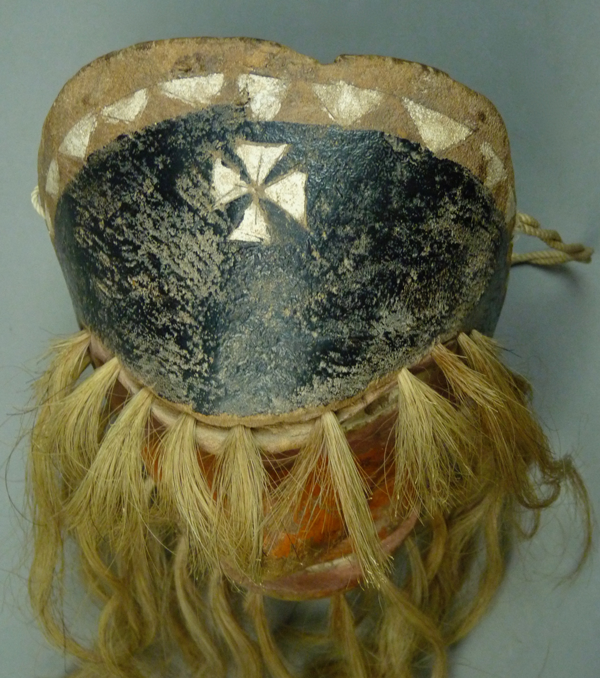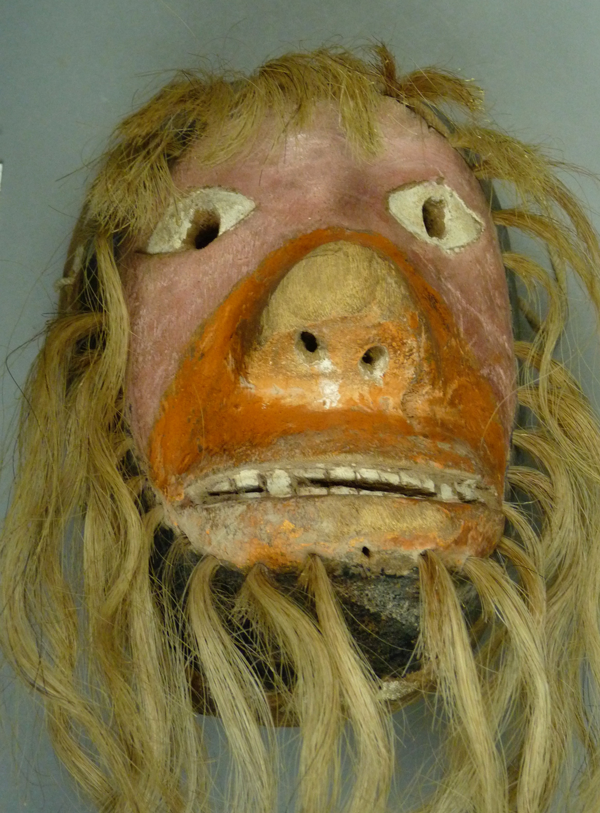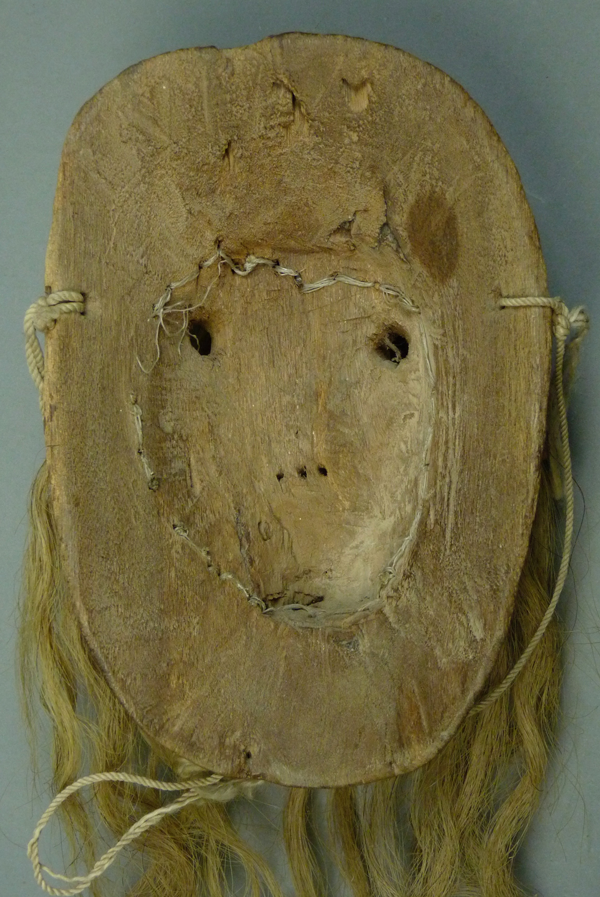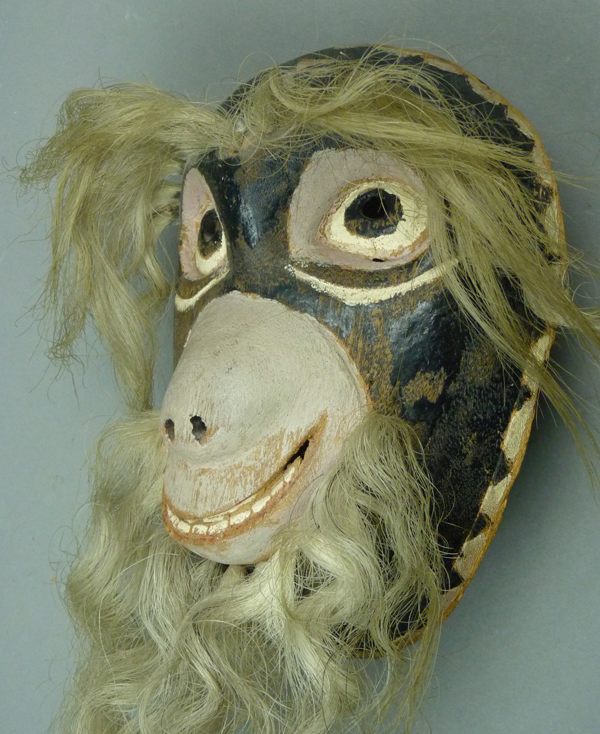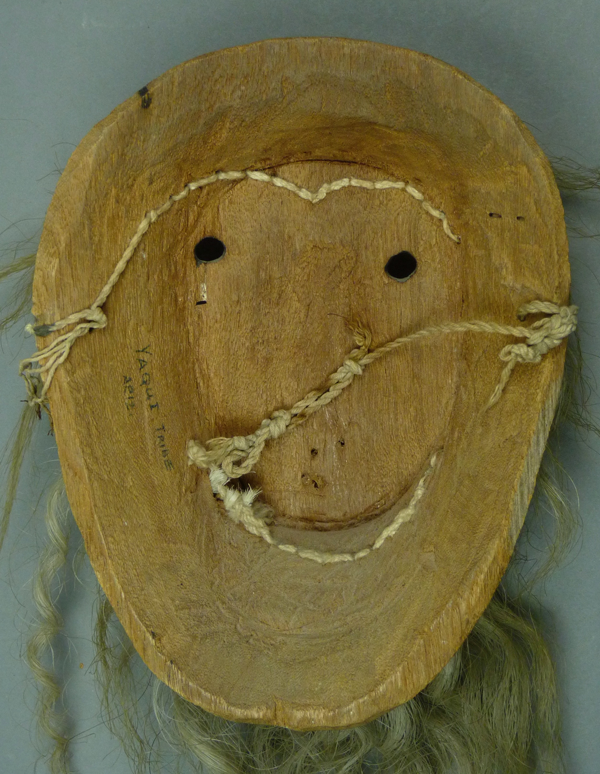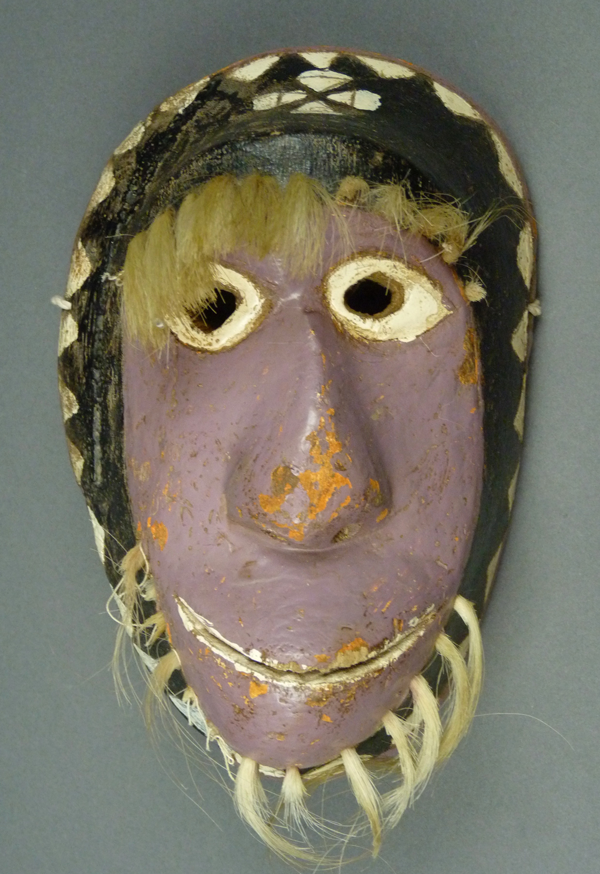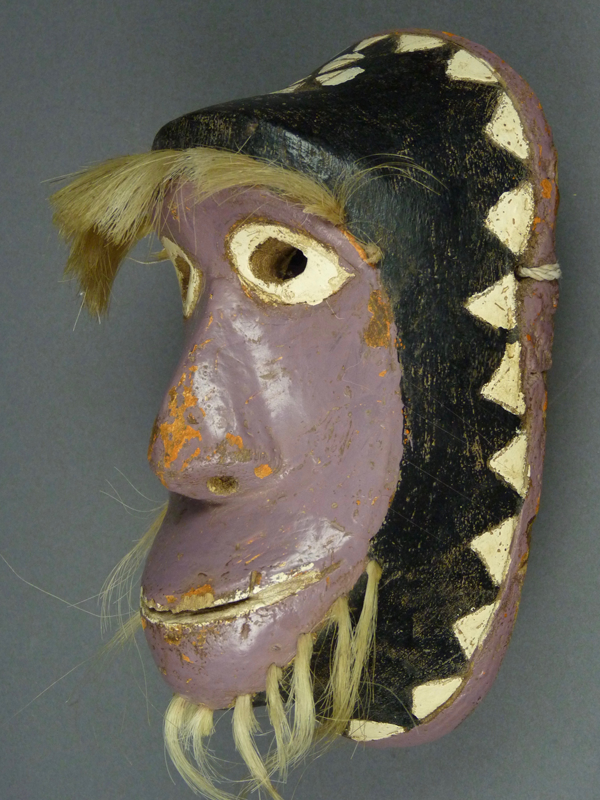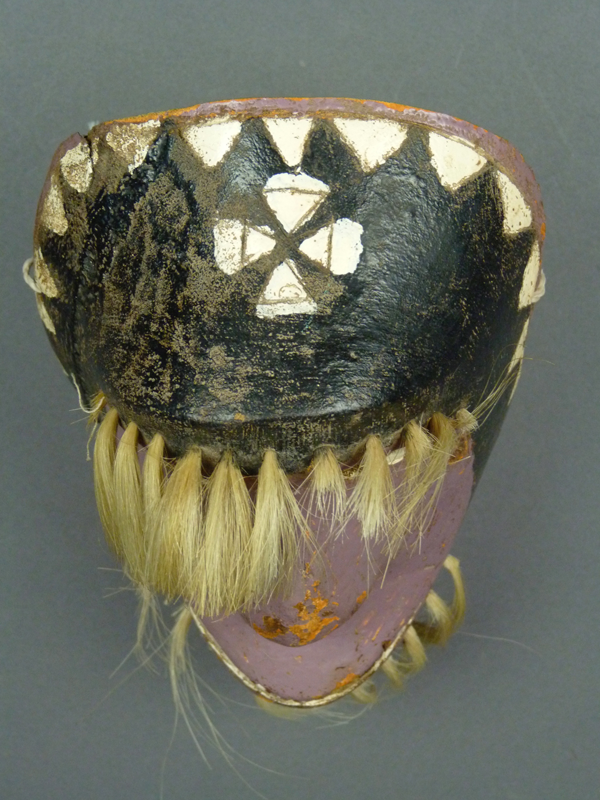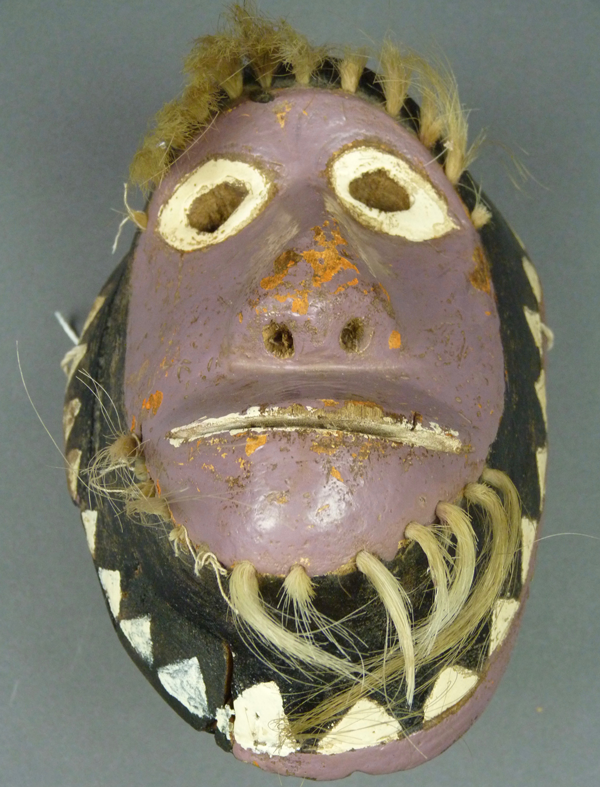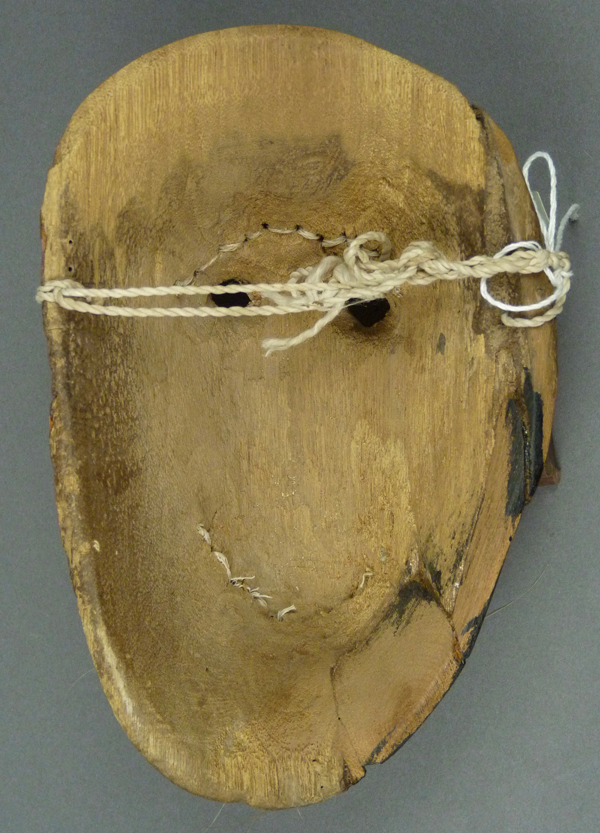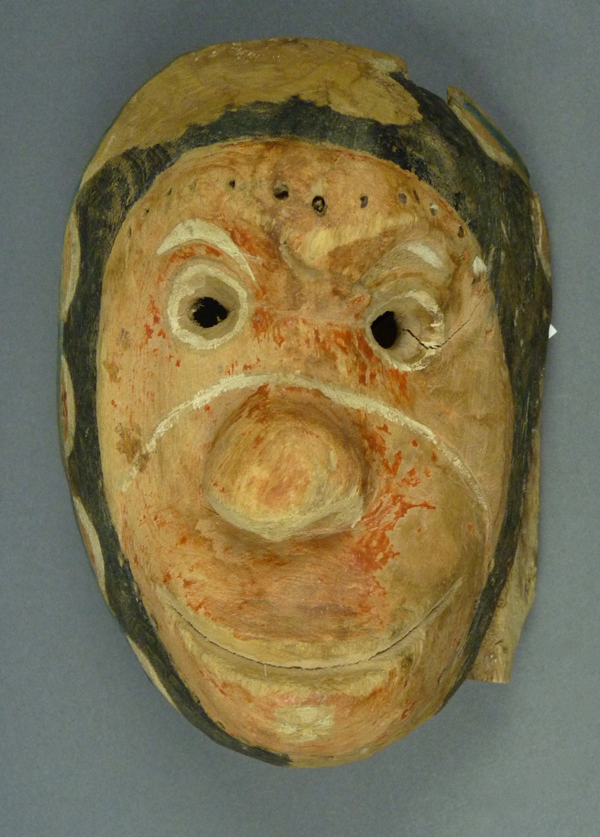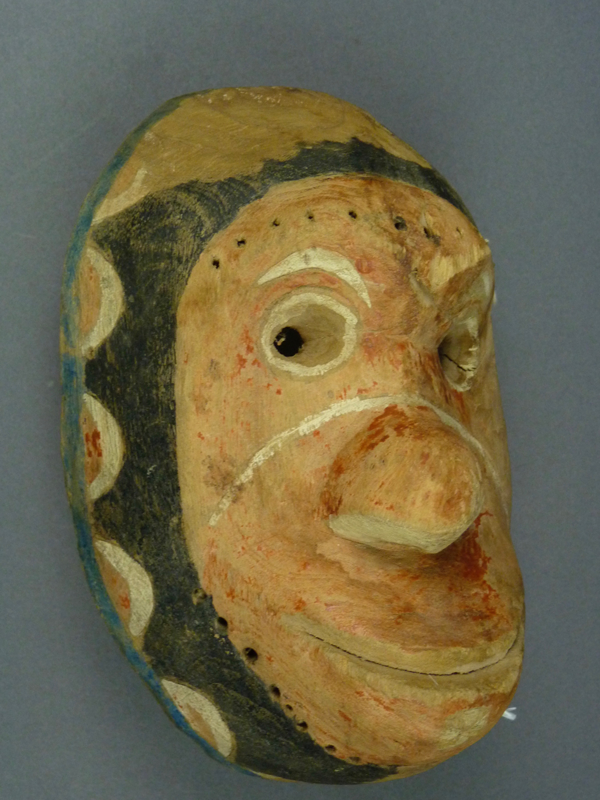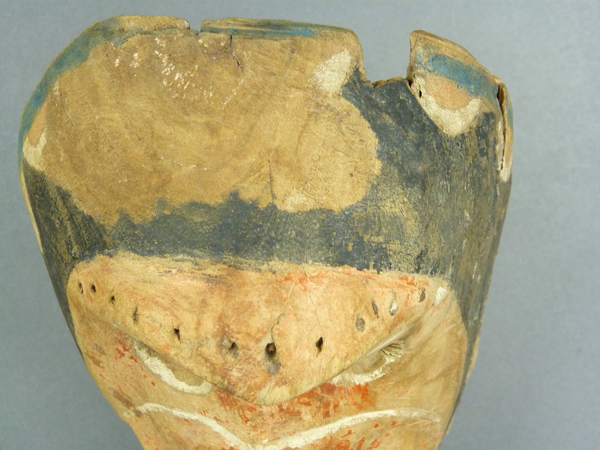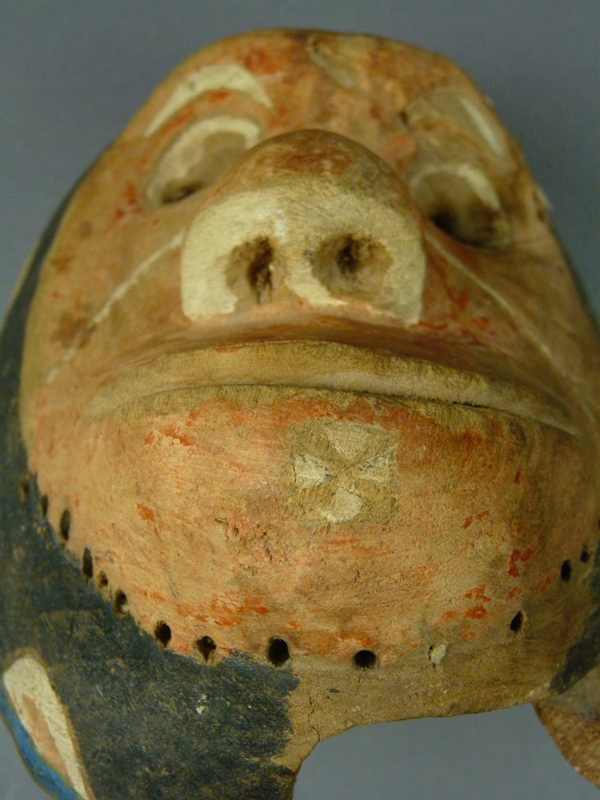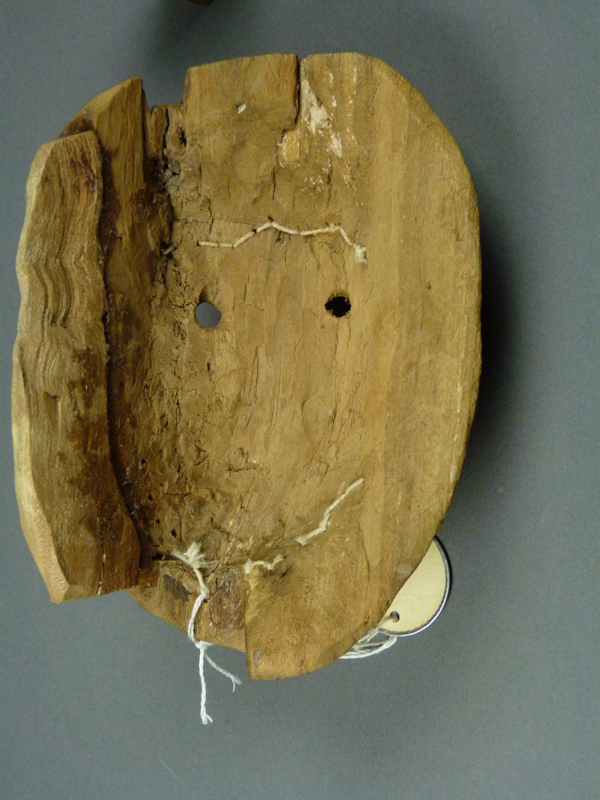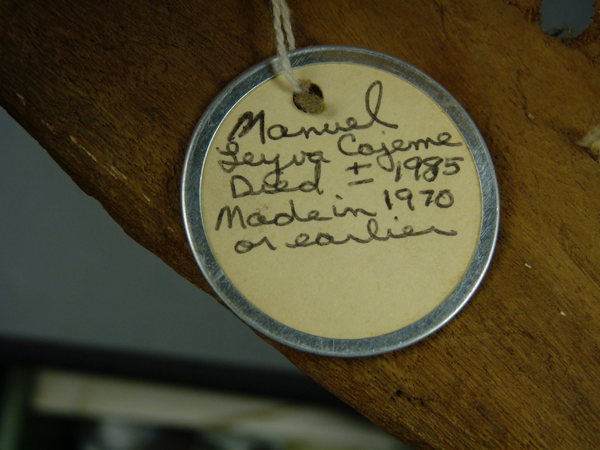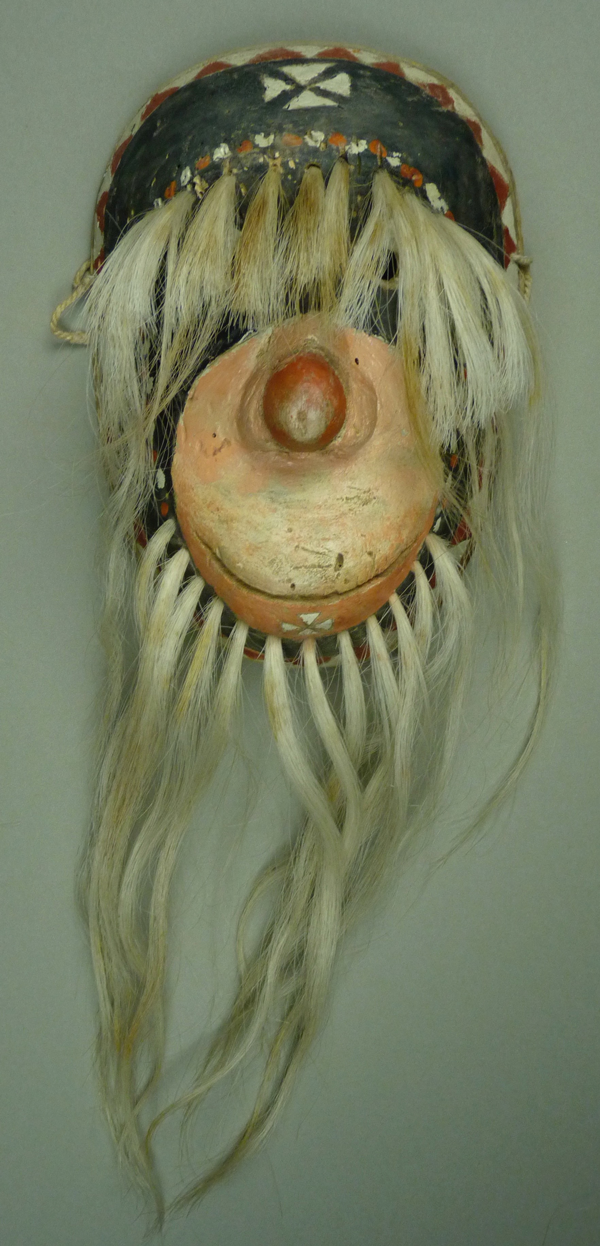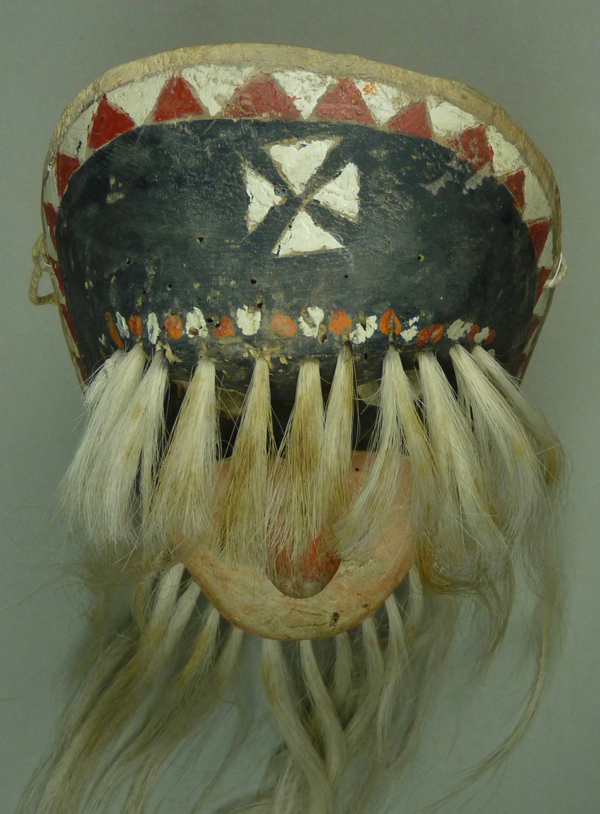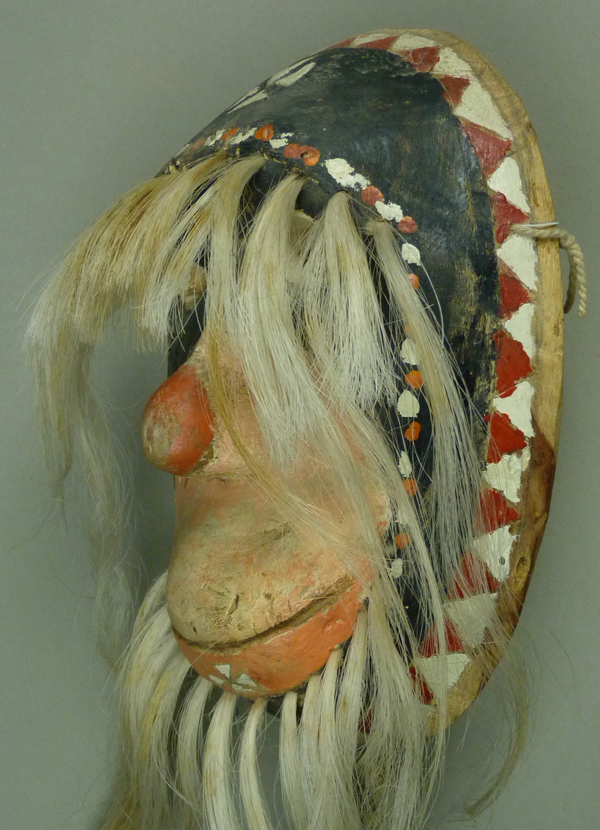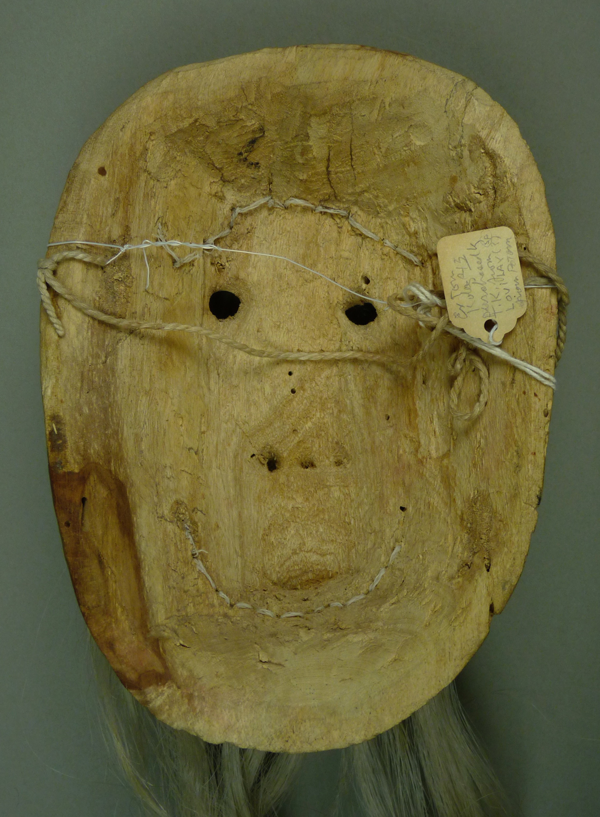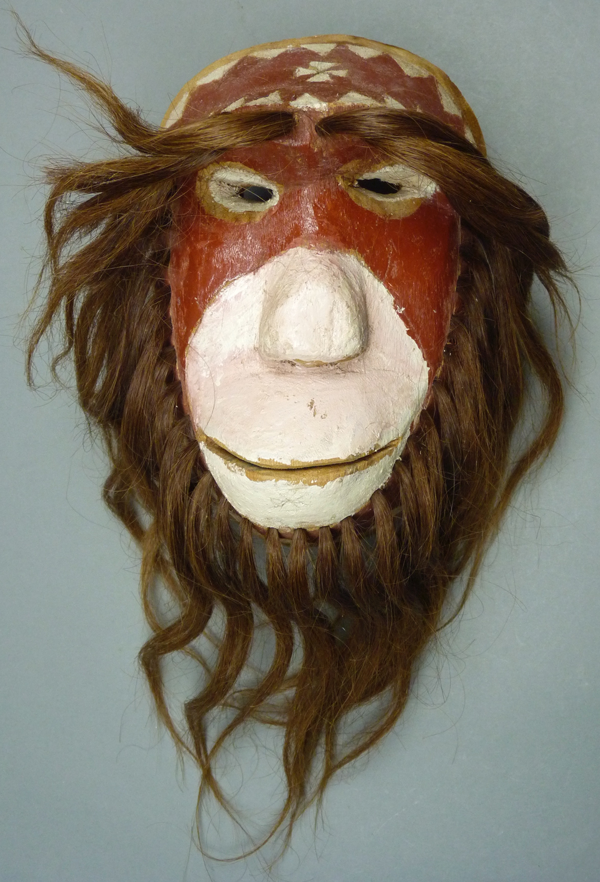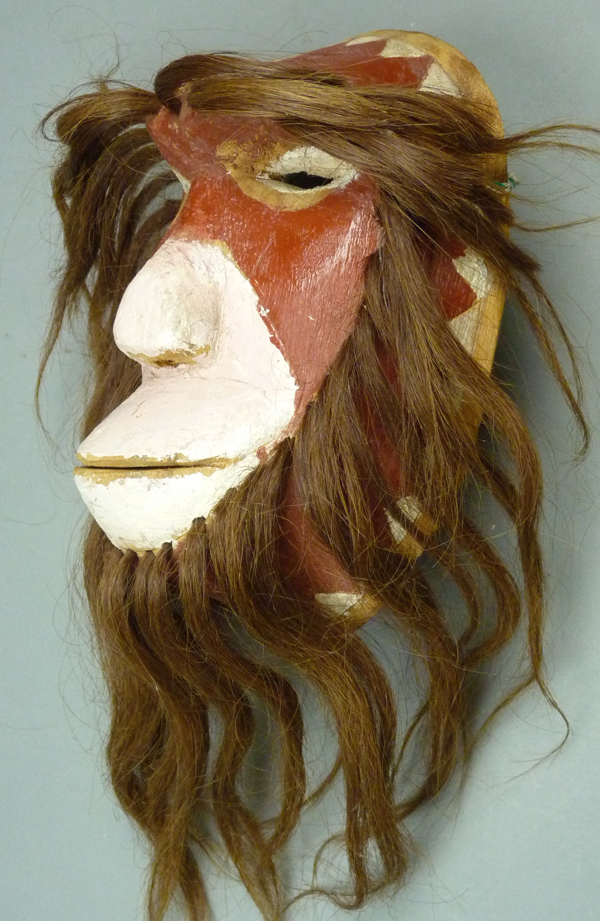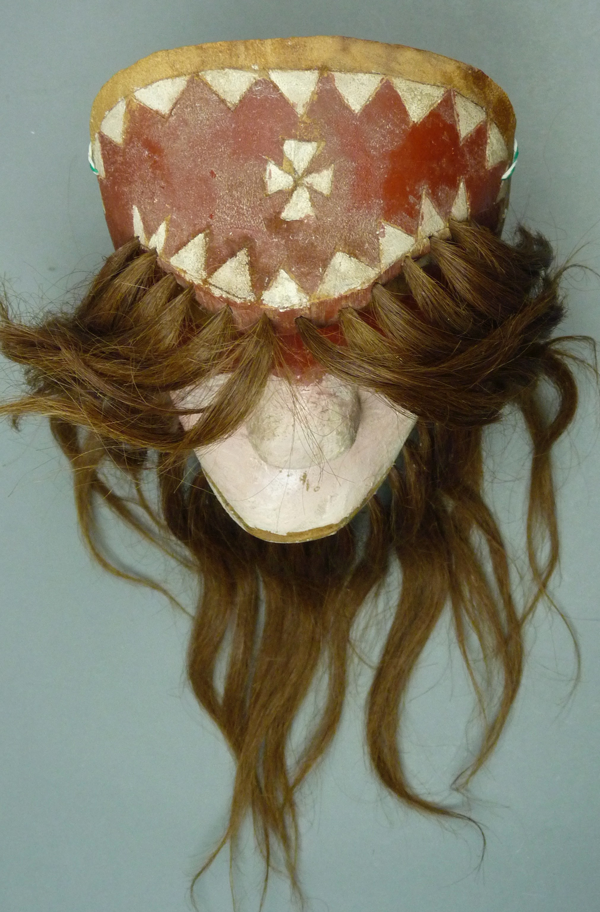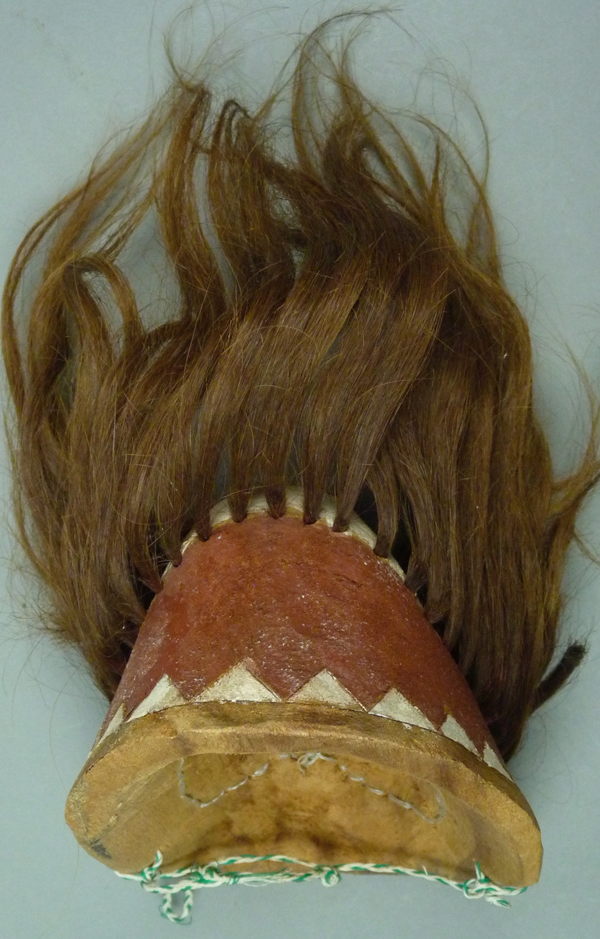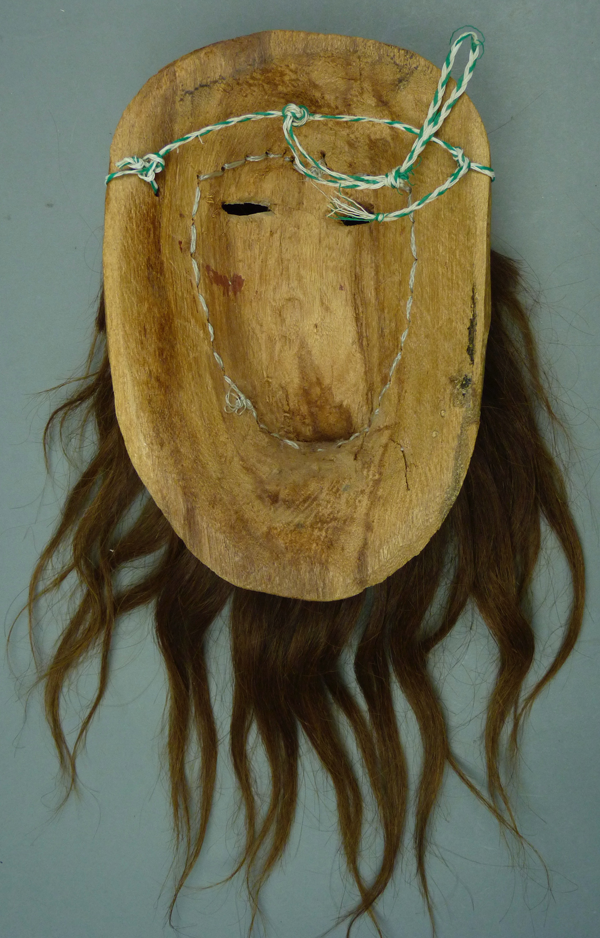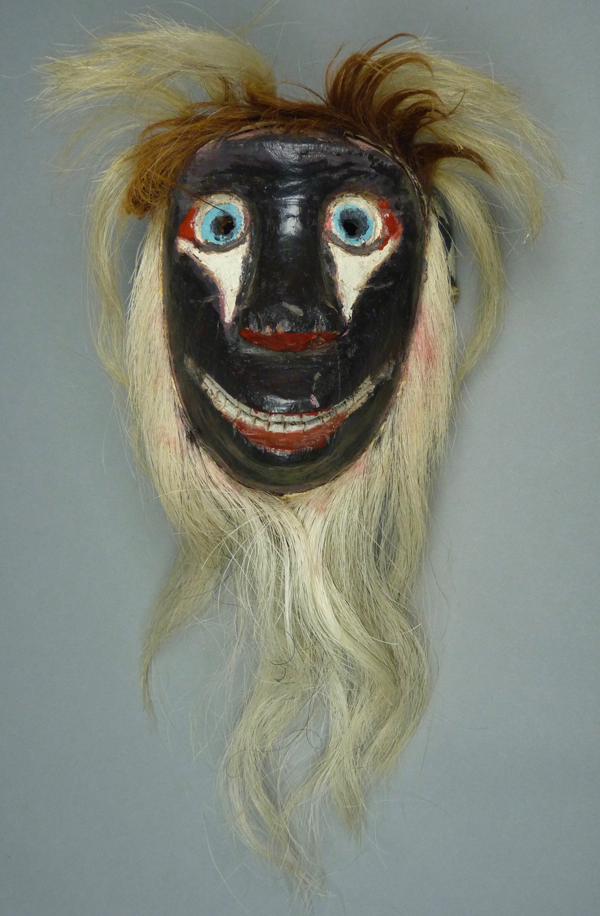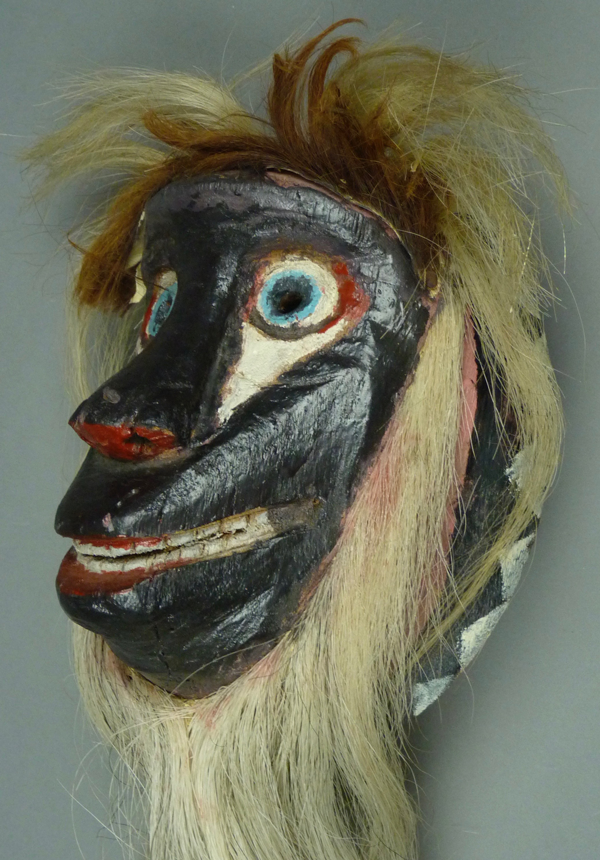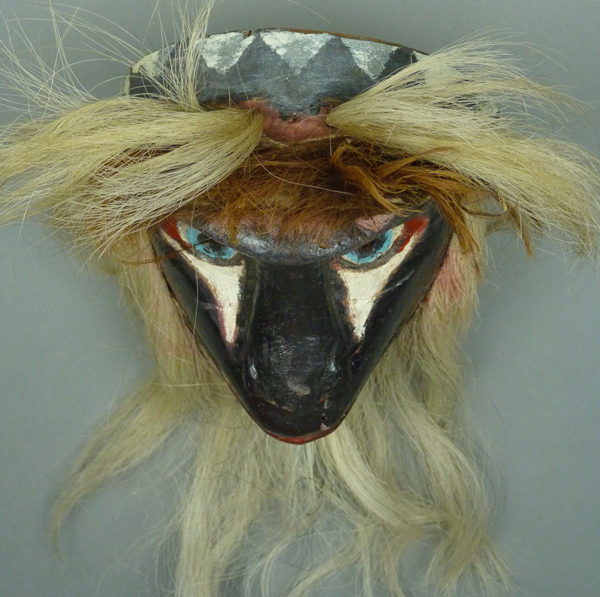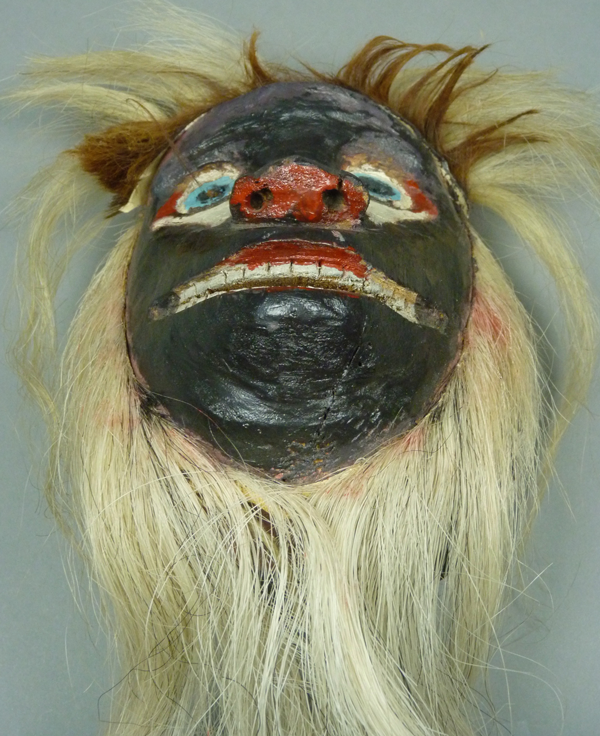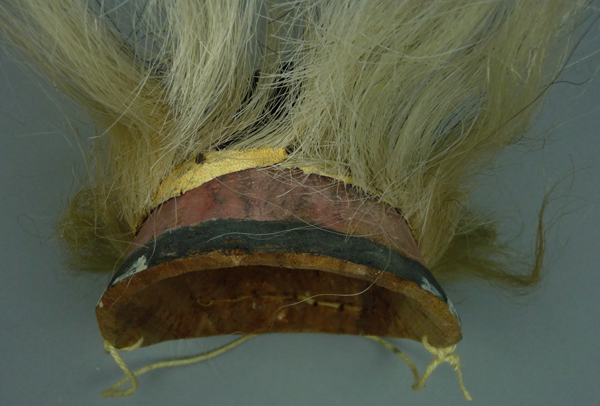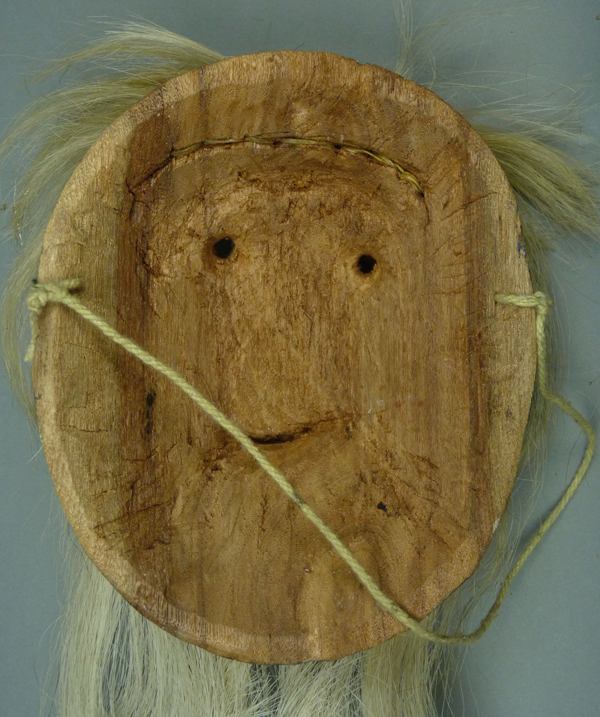This series of posts about Yoeme (Yaqui) Pascola masks began on July 4, 2016.
In 1990 I purchased a wonderful Yaqui Pascola mask with the face of a Chango (an ape or monkey) from Robin and Barbara Cleaver. As was frequently the case, this mask came up from Mexico at that time with little history. There was a similar mask in the collection of James Griffith, and he had included it in the book that he wrote with Felipe Molina—Old Men of the Fiesta: An Introduction to the Pascola Arts (1980, page 23, fig. 10 right). That mask too lacked an identified carver, but Griffith did state that it dated to the early 1970’s. I didn’t meet Tom Kolaz until about one year later; he told me that both masks were the work of Manuel Centella Escalante. I later realized that a handsome Goat pascola mask from about 1960, which was in the same photo as Griffith’s Chango mask, had also been carved by Manuel Centella. Two things became apparent in the years that followed—that there were many more unidentified Manuel Centella masks in private and museum collections, and that this relatively unknown carver was one of the most brilliant Yaqui artists of the mid-20th century. In this post and several more to follow I will celebrate his work. Today I will show a series of Chango masks by Manuel.
I share the impression of James Griffith that this carver may well have been the inventor of these Chango masks. He was certainly the one who created a number of them during a period when they were popular, sometime in the 1960s or 70s. They had their moment, but since then human faced masks and canine masks have been most commonly chosen by dancers. One of the more reliable distinguishing factors for this carver is this forehead cross, which consists of four triangles with their points together. Often there is a chin cross of the same design, but we shall not see this on the majority of the Chango masks.
I really like the combination of pink and orange paint on the face of this mask. Centella’s general concept for the Chango masks is to demarcate a circular area around the nose and mouth, in this case with the orange paint. Note the rim design, which is distinguished by a band of no color or of some solid color around the edge, with the conventional band of triangles within this solid band.
This top view provides a good look at Centella’s typical cross design, which was usually outlined with inscribed lines.
Centella had a variety of mouth designs. This is one of his typical variations for his Chango masks, to create small carefully carved teeth. More generally he tended to carve large noses on all of his masks.
This mask is 8¼ inches tall, 5½ inches wide, and 3½ inches deep.
It is clear from the staining on the back of this mask that the Chango design had a period of popularity; this mask might have been danced for about 5 or 10 years.
In 1993, three years after I purchased my first Chango (with the pink and orange face), I was delighted to find a child’s Chango mask by the same carver. I bought this from John Isaac, in Albuquerque, New Mexico.
I recognized the carver because of his typical forehead cross, the carefully carved small teeth, and his typical rim design of the plain band on the outside combined with scallops within.
This child’s mask has an appealing face. In this variation of the rim design, Centella substituted half circles for the more usual triangles. I will show another mask where he divided the half circles into two different colors, for another one of his typical variations.
Note how Centella scribed a line to define the height of the scalloped portion of the rim design.This mask is 7 inches tall, 5¼ inches wide, and 2½ inches deep.
The child’s mask was danced for several years. On the back one reads- “Yaqui Tribe/ Arizona.” Evidently it was found in that state. Manuel Centella frequently came up to Tucson, Arizona to dance, and he often brought along masks to sell to other dancers there. His masks were popular among those dancers.
These next two (I will call them mask#3 and mask#4) were collected in Sonora by Barney Burns and Mahina Drees.
Mask #3 reminds one of the first mask in today’s post; probably there was orange paint on the lower face, now covered by a coat of pink paint. At the time of collection it did not have any identified carver.
The original forehead cross is indicated by inscribed triangles, but a larger cross was painted later. I call your attention to the dished upper rim of this mask, a feature sometimes found on other Centella masks; I am referring to the uplift from the brow to the rim.
This is Centella’s most typical rim design. Note the mouth, a simple slit that was cut with a saw.
In this view it may be easier to see the original outline of the forehead cross.
There is no evidence of a chin cross.
The wear on the back of this mask is hard to miss; broken areas have been glued back in place. The upper edge has been sanded for some reason.
Mask #4 presents additional variations on the designs already presented.
In this case the circular area around the mouth has been defined by a white painted line.
This is another mouth that is indicated by a sawn slit. This rim design has the half circles divided into two colors, a variation that seems to have been very specific for this artist, and rarely used by any other.
The surface of the forehead has been scraped, obliterating any evidence of the original forehead cross, but there is a typical Centella cross on the chin.
The original red paint is so worn!
It looks like the left edge had broken off and was glued back in place, while part of the chin was not restored. The intact right edge demonstrates heavy wear.
The old tag attributes this mask to the wrong Manuel, and estimates that it was carved in 1970 if not earlier. As I already noted, these masks probably emerged in the 1960s.
The fifth mask is from the collection of David West (of Gallery West in Tucson), who kindly permitted me to photograph and publish these photos. This mask was originally collected in Sonora by Tom Kolaz.
This is a classic Manuel Centella chango mask, but then someone painted the nose red, as if to convert it to a clown?
This view of the brow reveals Centella’s usual forehead cross and his classic rim design.
The mouth is a sawn slit.
This is another of these chango masks that does have a cross on the chin.
I don’t know whether this mask was ever danced; maybe it was danced briefly and then sold.
I obtained this sixth mask from an estate, with no provenance.
One can immediately see the typical forehead cross, the usual rim design, and the circular area around the nose and mouth. This is clearly another chango mask by Manuel Centella. This mask also has the dished brow that I pointed out on another mask.
This last mask demonstrates once again a familiar mouth design for this carver—a simple sawn slit.
From the top, the rim design is easy to see. In this view one can see another variation that Manuel Centella used on some of his masks, the line of decoration around the brow that almost seems like an inner second rim design.
There is no chin cross on this chango mask. Manuel Centella regularly included a chin cross on his human faced masks.
This mask is 7¾ inches tall, 5 inches wide, and 4 inches deep.
This mask was danced for a few years.
Here is another EBay™ find, this one from 2014. In the early 1980s, the seller purchased this mask in Sonora, allegedly from the carver. I am thinking that this might be a Chango by Centella, admittedly on limited evidence. As you can see, this mask does have the tiny, carefully carved teeth that we found on the first two masks, and the round vision openings that Centella used on many Chango masks, but other typical design details are not present.
As for the decision to call this a Chango mask, I was also motivated by the shock of brown hair on his forehead, which is actually supplied by a flap of hide (although the white brows are made from the usual hair tufts), and by the beard, also composed of hide flaps, and by the further evidence of pink skin behind the flaps; this mask has a black face with a pink rim— a strange little monkey.
From this view one can see that the side of the face is (or was) pink.
There are no crosses.
This mask is 7½ inches tall, 6 inches wide, and 4 inches deep.
Under the chin there is more pink paint. Also visible from this angle is the hide base that supports the hair for the beard.
There doesn’t seem to be much evidence of wear.
Next week I will show you human faced masks by Manuel Centella Escalante.

